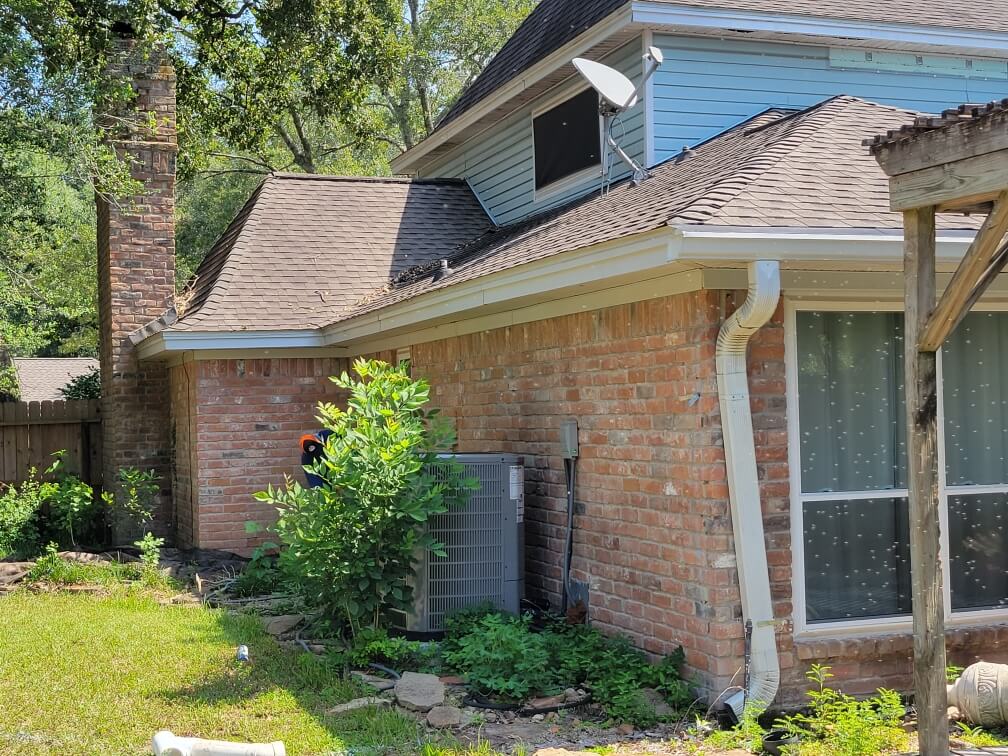
Gutters are an essential part of a home’s exterior, but they are often overlooked until they start to show signs of wear and tear. Gutters play a critical role in protecting your home from water damage by directing rainwater away from your roof, walls, and foundation. When gutters are damaged, broken, or clogged, they can cause serious damage to your home’s exterior, leading to costly repairs. If you have noticed that your gutters are leaking, sagging, or overflowing, it may be time to repair or replace them. Here are 6 tips on gutter maintenance and how to keep them in good working condition.
Clean the gutters
The first step in repairing gutters is to clean them. Gutters can accumulate debris, leaves, and other objects that can clog them and prevent water from flowing through them. To clean your gutters, start by removing any debris or leaves from the gutters and downspouts. You can use a gutter scoop, a small trowel, or a plastic bag to remove the debris. After removing the debris, flush the gutters with water to remove any remaining dirt or debris.
Repair small holes or cracks
Small holes or cracks in your gutters can be repaired with gutter sealant. Gutter sealant is a waterproof adhesive that can be applied to the damaged area to seal the hole or crack. To apply the sealant, clean the damaged area with a wire brush or sandpaper, and then apply the sealant with a caulking gun. Make sure to apply the sealant evenly and allow it to dry completely before testing the repaired area.
Replace damaged sections
If the damage to your gutters is too severe for sealant, you may need to replace the damaged sections. To replace a damaged section of gutter, start by removing the damaged section and any attachments. You can use a hacksaw or a reciprocating saw to cut the damaged section, or you can use a pair of tin snips if the damage is minor.
After removing the damaged section, measure the length of the new section needed and cut it to size. Attach the new section to the existing gutters using gutter screws or rivets, and then seal any joints with gutter sealant.
Reinforce Sagging gutters
Sagging gutters can be reinforced by installing gutter hangers or brackets. Gutter hangers are metal brackets that attach to the fascia board and hold the gutters in place. To install gutter hangers, start by locating the studs behind the fascia board. Then, attach the hangers to the studs using wood screws or lag bolts.
After attaching the hangers, slide the gutters into place and secure them to the hangers with screws or rivets. Make sure the gutters are level and sloping toward the downspouts.
Install gutter Guards
One way to prevent clogs and debris buildup in your gutters is to install gutter guards. Gutter guards are mesh or plastic screens that fit over the gutters and prevent leaves, debris, and other objects from getting inside. Gutter guards can be installed by sliding them under the shingles or attaching them to the gutters with clips or screws.
Inspect and maintain your gutters
Regular inspections and maintenance can help you identify and prevent gutter problems before they become major issues. Inspect your gutters at least twice a year, once in the spring and once in the fall, to check for damage, clogs, and leaks. If you notice any issues, repair them immediately to prevent further damage.
Conclusion
In conclusion, maintaining your gutters is an important part of keeping your home in good condition. By regularly inspecting, cleaning, and repairing your gutters, you can prevent serious water damage to your home’s exterior and foundation. If you are not comfortable repairing your gutters, consider hiring a professional gutter cleaning and repair service to ensure that your gutters are in good working condition. With proper care, your gutters can protect your home for years to come.
Request A Quote
continue reading
